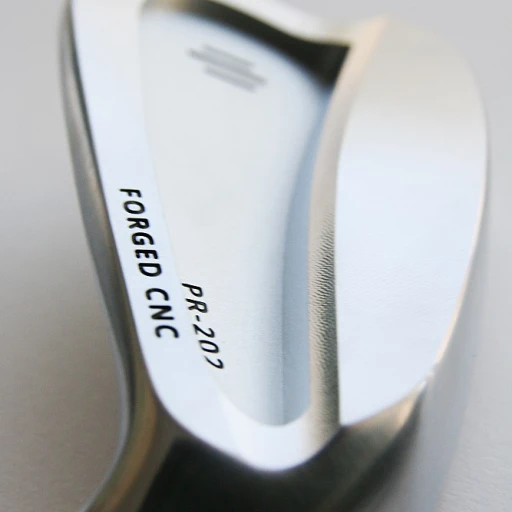The Art of Logo Design in Golf
Unveiling the Craftsmanship in Modern Golf Logos
Golf logos are more than just insignias plastered on polo shirts or golf balls. They are the embodiment of history, tradition, and the promise of a unique golfing experience. As courses and clubs evolve, their logos play a crucial role in conveying both the legacy and the modern sophistication of the game.
Designers tasked with creating these iconic symbols must master the art of balance. They straddle the line between bold innovation and the clean lines of minimalist design. This approach ensures that a logo not only catches the eye but also captures the essence of the golf course or country club it represents.
Some logos might appear simple, yet they carry an air of elegance and exclusivity. Whether it’s the prestigious winged foot adorning a high-quality golf ball or the stylized representations found at renowned places like Fishers Island and Sleepy Hollow, each design tells a story of excellence. Moreover, by adding modern touches while respecting traditional elements, clubs create branding that withstands the test of time.
For those seeking the best designs that save space on a logo golf fan’s wall, these creations are not just about aesthetics. They encapsulate a club’s values, its dedication to maintaining the finest courses, and the promise of a memorable round of golf. As the discourse around logo design in golf continues to evolve, so do the opportunities for courses to express their unique identities in fresh and exciting ways.
Historical Logos That Shaped Golf
Influential Emblems that Transformed the Fairways
Throughout the annals of golf, certain logos have become emblematic symbols, shaping the identity of clubs and courses, as well as resonating deeply with golf enthusiasts worldwide. These historical logos are more than mere symbols; they are a testament to the rich tradition and culture embedded within the game. Immersing in the world of these iconic designs grants us a glimpse into the profound influence they wield.
Consider the timeless appeal of certain golf course emblems, like those of Winged Foot or Fishers Island. These logos have become inseparable from the courses they represent, embodying qualities of excellence and prestige. The clean lines and minimal design often seen in these logos play a crucial role in creating an enduring impression. Their high-quality design becomes a bold expression, tempting golfers to add these courses to their list of favorites.
Moreover, minimalism in club logos increases readability while establishing a distinctive identity. For instance, the simple yet powerful logo golf style of the Sleepy Hollow Country Club invites intrigue and admiration, underscoring the importance of a refined visual narrative in the sport.
The elegance of these historical designs paves the way for discussion on modern logos, which blend tradition with innovation. Their influence often reflects in contemporary brands, showcasing an evolution that respects historical roots while embracing modernity.
Logos have undoubtedly played a pivotal role in illustrating the heritage of golf. Understanding these traditional designs allows us to save insights and appreciate the communication power behind each golf logo design. For an in-depth look at how these symbols impact identities beyond aesthetics, delve into the comprehensive analysis of Tiger Woods' career influence on luxury golf products.
Luxury Golf Brands with Iconic Logos
Luxury Golf Brands: A Testament to Timeless Design
In the world of luxury golf, brand identity is often defined by the elegance and sophistication of its logo. These logos are not just symbols; they are a testament to the brand's heritage and its commitment to excellence. The best luxury golf brands have mastered the art of creating logos that resonate with both tradition and modernity, making them instantly recognizable on any golf course.
One of the most iconic logos in the luxury golf sphere is that of Winged Foot. Known for its clean lines and minimalist design, the logo embodies a sense of high quality and exclusivity. It’s a perfect example of how a simple design can convey a powerful message, capturing the essence of the club's prestigious reputation.
Similarly, the logo of Fishers Island stands out with its bold and modern style. The design is both simple and sophisticated, reflecting the club's commitment to providing a top-tier golfing experience. The use of clean lines and a minimalist approach ensures that the logo remains timeless, appealing to both traditionalists and modern golf enthusiasts alike.
Another noteworthy mention is the Sleepy Hollow logo, which combines historical elements with a contemporary twist. This blend of old and new is a common theme among luxury golf brands, as it allows them to honor their rich heritage while staying relevant in today's market.
These logos are more than just visual identifiers; they are integral to the brand's identity, adding value and prestige to the golf clubs they represent. For those interested in exploring more about these iconic designs, the journey through the finest golf course logos offers a deeper understanding of how these symbols have shaped the world of luxury golf.
The Psychology Behind Golf Logos
The Psychological Power of Golf Logos
In the world of golf, logos go beyond mere aesthetics; they wield significant psychological influence that can profoundly impact the perception of a brand or golf club. The intricate play of design elements plays a crucial role in crafting logos that resonate with both tradition and modernity.
To start with, color choices in golf logos often evoke emotional responses which can define a player's impression of a golf course or club. For instance, the use of green and blue frequently invokes feelings of trust, calm, and openness—qualities that are particularly appealing on a serene golf course. Such colors are commonly used in logos for private clubs and luxurious country clubs, including the prestigious Fishers Island or Sleepy Hollow.
Further delving into typography, the choice between serif and sans-serif fonts represents different facets of sophistication and simplicity. Serif fonts, with their classic appeal, are often associated with heritage-rich clubs such as Winged Foot, emphasizing tradition and reliability through clean lines and high-quality finishes. Conversely, sans-serif fonts lend a more modern, minimalist design that appeals to a newer, bolder golfing audience.
Shapes and symbols also contribute heavily to a logo’s psychological impact. Incorporating objects like golf balls or subtle nods to iconic course features enriches a logo's storytelling. One illustrative example is the "fried egg" logo, widely recognized in golf communities for its clever, humorous connotation linked to a difficult sand bunker shot.
In addition, logos that achieve simplicity while remaining memorable tend to establish stronger connections with their audience. This simplicity can manifest as minimalist designs, which hold a timeless quality and are effortless to read, ensuring they remain in the mind of both connoisseurs of the game and casual players.
Ultimately, golf logos serve as powerful symbols that encapsulate the ethos of a club or brand. They operate not just as identifiers but as psychological anchors that enhance brand loyalty and connection. Crafting a logo that balances history with a contemporary feel can distinguish a club in the competitive golfing landscape. Perhaps this is why golf courses continue to invest heavily in logo design, as a well-executed logo not only saves its place in the community’s favorites but ultimately becomes a hallmark of prestige in the golfing world.
Case Studies: Successful Logo Rebranding in Golf
Revitalizing Legacy: Successful Golf Logo Transformations
In the ever-evolving world of golf, the importance of a brand's logo cannot be underestimated. A well-executed logo serves as both a symbol of tradition and a beacon of modern style. Many clubs and brands have recognized the necessity of refreshment, leading to successful logo redesigns that respect history while injecting contemporary appeal.
Consider the transformation of Winged Foot Golf Club. Their updated logo retains the classic wing symbol, yet adopts a cleaner, more minimalist design. Clean lines and a simplified style have breathed new life into their branding, allowing it to stand out amongst other club logos. Such changes ensure that their logo remains a favorite among younger audiences while preserving its historic significance.
Another great example is Fishers Island Club, who subtly modernized their once intricate logo into something bolder and easier to read. The logo now features high contrast and sharper elements, better capturing the essence of the ocean course it represents. This refreshing approach keeps the emblem deeply connected to its roots while appealing to discerning golfers and high-end clientele.
In golf ball branding, examples are seen in companies introducing minimalist designs that focus on the logo as a mark of quality. Clean, sparse motifs have become en vogue, appealing to golfers who appreciate both aesthetic simplicity and high performance.
Overall, these transformations highlight the essential balance between historical reverence and modern innovation. Successful rebranding in golf tends to embrace bold, clean designs that not only enhance the visual identity but also reinforce the brand's legacy and promise of excellence in every club, logo, and golf course experience that they offer.
Future Trends in Golf Logo Design
Innovative Approaches and Modern Elegance in Golf Logos
The future of golf logo design is moving towards a more minimalist and refined aesthetic, focusing on clean lines and simplicity that resonate with modern audiences. This evolution is not just about aesthetic appeal; it also reflects a shift in branding strategy, aligning with the values of clarity and prestige that luxury golf brands wish to convey.
Modern golf logos are increasingly adopting minimalist designs golf enthusiasts and country clubs favor. Such designs are not only easy to read but also versatile, adapting well to various applications, from golf balls to club merchandise. This trend can be seen in logos of renowned clubs like Fishers Island and Winged Foot, where the emphasis is on bold, clean graphics that suggest both legacy and innovation.
The integration of technology into design processes allows for more personalized and impactful branding. Techniques such as digital rendering and 3D modeling offer opportunities to explore previously unattainable levels of detail and precision, elevating club logos to works of art that stand as symbols of distinction. These high-quality designs maintain elegance while meeting the standards of modern brand aesthetics.
An example of successful modern logo rebranding can be seen in the evolution of dynamic and interactive elements, such as those in disc golf, where logos are designed for players of varying levels of engagement and skill. This adaptability ensures that the logos remain relevant and memorable across all formats and media.
Moreover, as golf branding continues to embrace innovation, there is a renewed focus on sustainability and environmental responsibility. Logos are being designed to reflect these values, with eco-friendly materials and inks becoming standard choices. This commitment not only addresses broader societal concerns but also aligns with the expectations of a more conscientious consumer base.
As the luxury golf industry progresses, the designs will no doubt continue to engage and inspire, embodying both the time-honored traditions of the sport and the exciting possibilities of the future. This balance of tradition and modernity makes these logos favorites among both club members and spectators alike, ensuring their place as iconic symbols within the golfing world.













